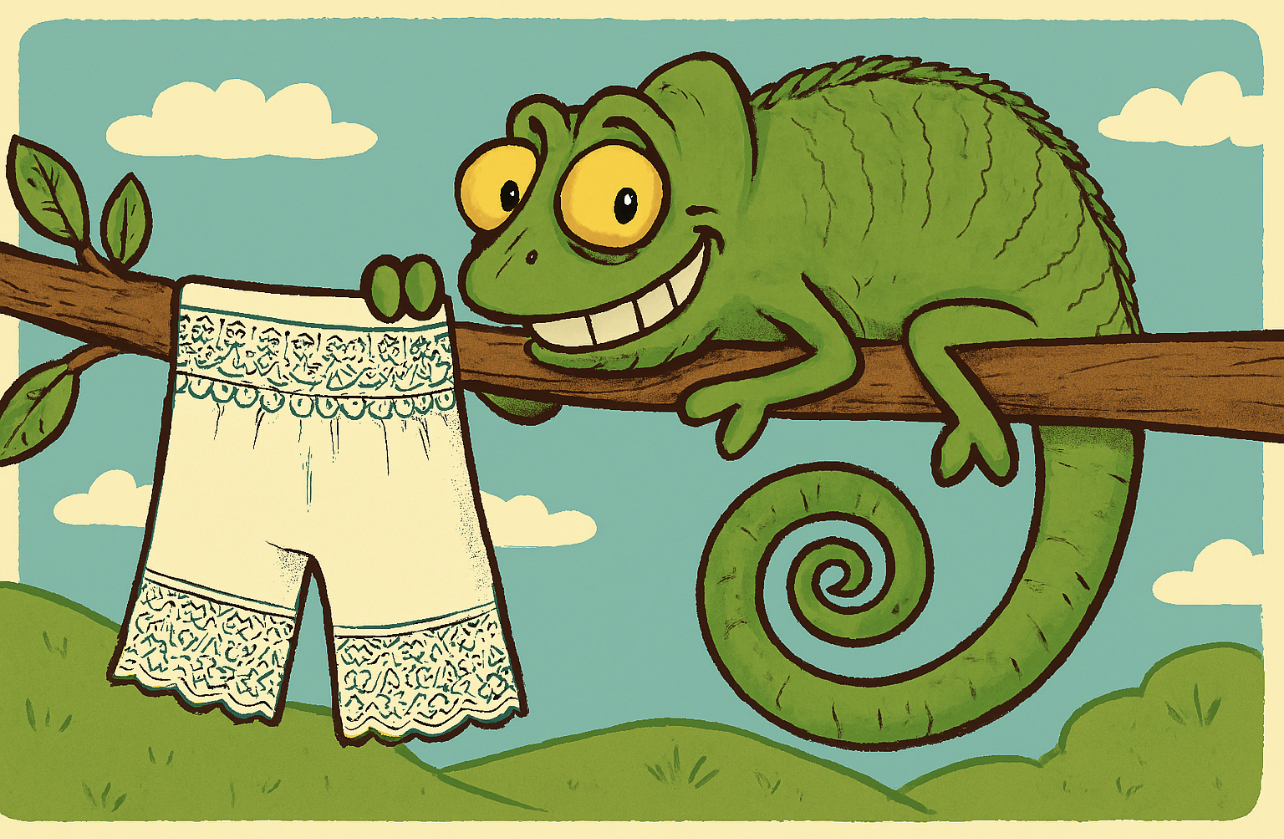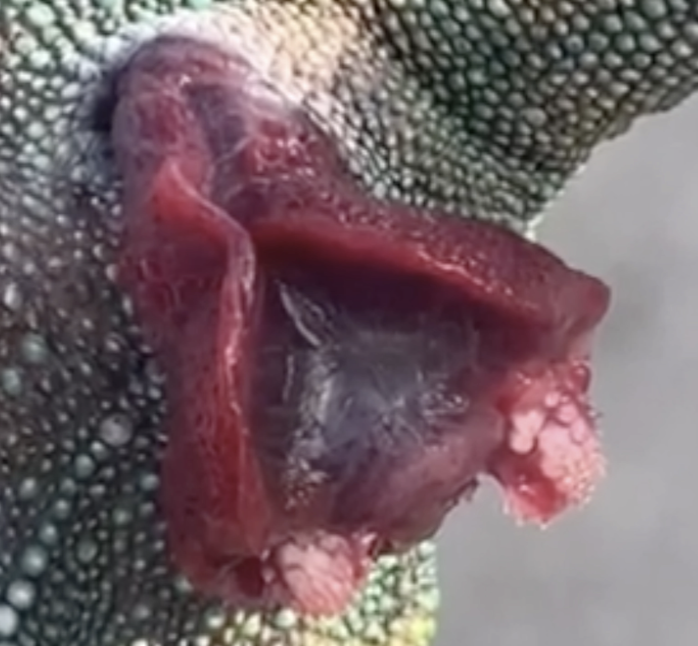Myth 47: “Sperm Plug is Present in Chameleons”

NO, NOT TRUE: Chameleons do not produce sperm plugs. What's often mistaken for one is actually a harmless hemipeneal shed — and even veterinarians juggle these terms, which leads to confusion in husbandry.
What a Sperm Plug Actually Is
Found in animals like rodents, pigs, insects, and some reptiles and primates.
Formed inside the female after mating.
Made of seminal fluid proteins, sometimes mixed with sperm.
Its purpose: block the reproductive tract to prevent rival males from fertilizing the female.
Hemipenis (not Hemipene), plural Hemipenes

The hemipenis is a paired reproductive organ found in male chameleons and other squamates (lizards and snakes). Each male possesses two hemipenes, located within the base of the tail, which are normally inverted and hidden. During copulation, one hemipenis is everted—turned inside out—through muscular action and inserted into the female's cloaca. The structure is often ornamented with spines, ridges, or folds that help anchor it during mating. In chameleons, hemipenes can vary significantly between species, making them useful for taxonomic identification. The organ does not produce sperm itself but serves as a conduit from the testes via the vas deferens. Hemipenal morphology is species-specific and may play a role in reproductive isolation. Unlike mammals, chameleons do not have a single penis, and only one hemipenis is used at a time. The presence and shape of the hemipenes are also used to sex juvenile chameleons in scientific and captive settings.
Because hemipenes are of ectodermal origin, they retain some qualities of the skin, including the ability to shed their surface when it becomes aged. Since they are retracted into the pockets, the shed material does not drop off as it does from the skin of the body and extremities; instead, it is shed into the lumen of the retracted organ and can sometimes become lodged there.
Why Chameleons Don't Have Sperm Plugs
Male chameleons do not deposit anything inside the female that resembles a sperm plug.
What's often misidentified is a hemipeneal shed — a keratinous remnant from the ectodermal surface of the hemipenes.
These sheds are:
Not sperm-based
Not gelatinous
Not plugs
Simply exuviae — shed skin from the hemipenes
The "White Waxy Thing" You May See

After shedding, male chameleons may pass a pair of soft, white deposits during defecation.
These are not sperm plugs. They are keratin-based exuviae, often dried quickly and discarded.
Sometimes, males hang them on branches like tiny white lingerie — a visual quirk that's both fascinating and misleading.
Why the Confusion Happens
Even experienced veterinarians and breeders sometimes mislabel these structures due to overlapping terminology in reptile anatomy.
The term "sperm plug" has been parroted across forums and care guides without scrutiny, leading to widespread misunderstanding.
The Pathological Hemipeneal Plug

A hemipeneal plug can form when multiple sheds accumulate inside the retracted hemipenis after not being disposed one by one.
The root cause of a formation of Hemipeneal Plug is dehydration both in the wild as well in captivity or hemipeneal infections, injuries and deformities.
In the wild, hemipeneal plugs may form during fru season.
In the captivity, hemipeneal plugs are as a rule result of wrong hydration and appear as a rule in specimens not exposed to nighttime fogging.
This is a health issue, not a reproductive strategy.
If not removed, it causes mechanical impotency and get infected by bacteria and fungi and cause inflammations of the hemipenes or even their necroses.
It may require intervention if the plug becomes impacted or infected.
Summary
Chameleons do not produce sperm plugs.
The correct term is hemipeneal shed or exuvia, not plug.
These structures are keratinous, non-reproductive, and shed via defecation, but not in every bowel movement, only after shedding.
Misusing the term "sperm plug" is an error in chameleon husbandry that needs correcting.
Hemipeneal Plug is a pathology.